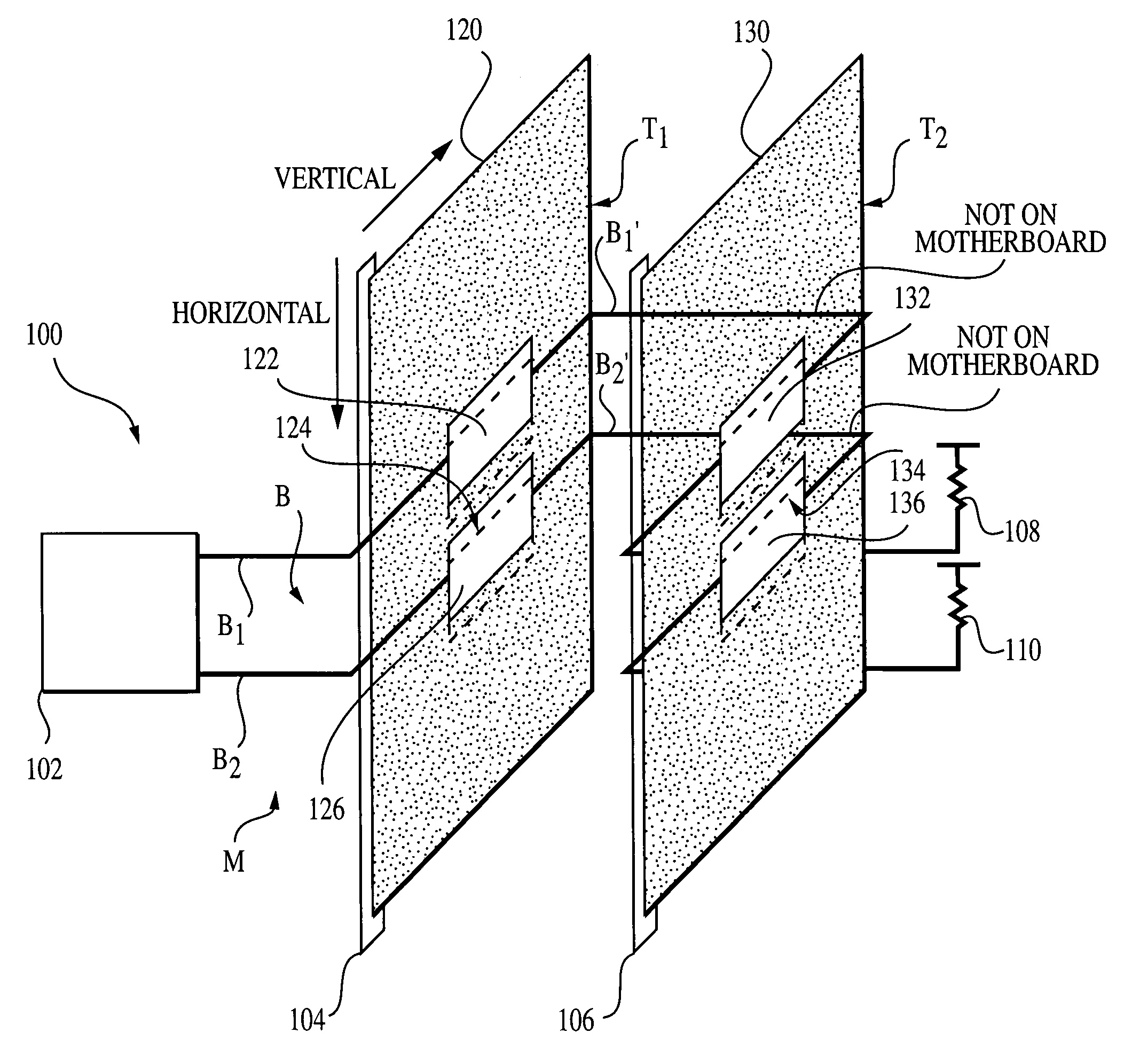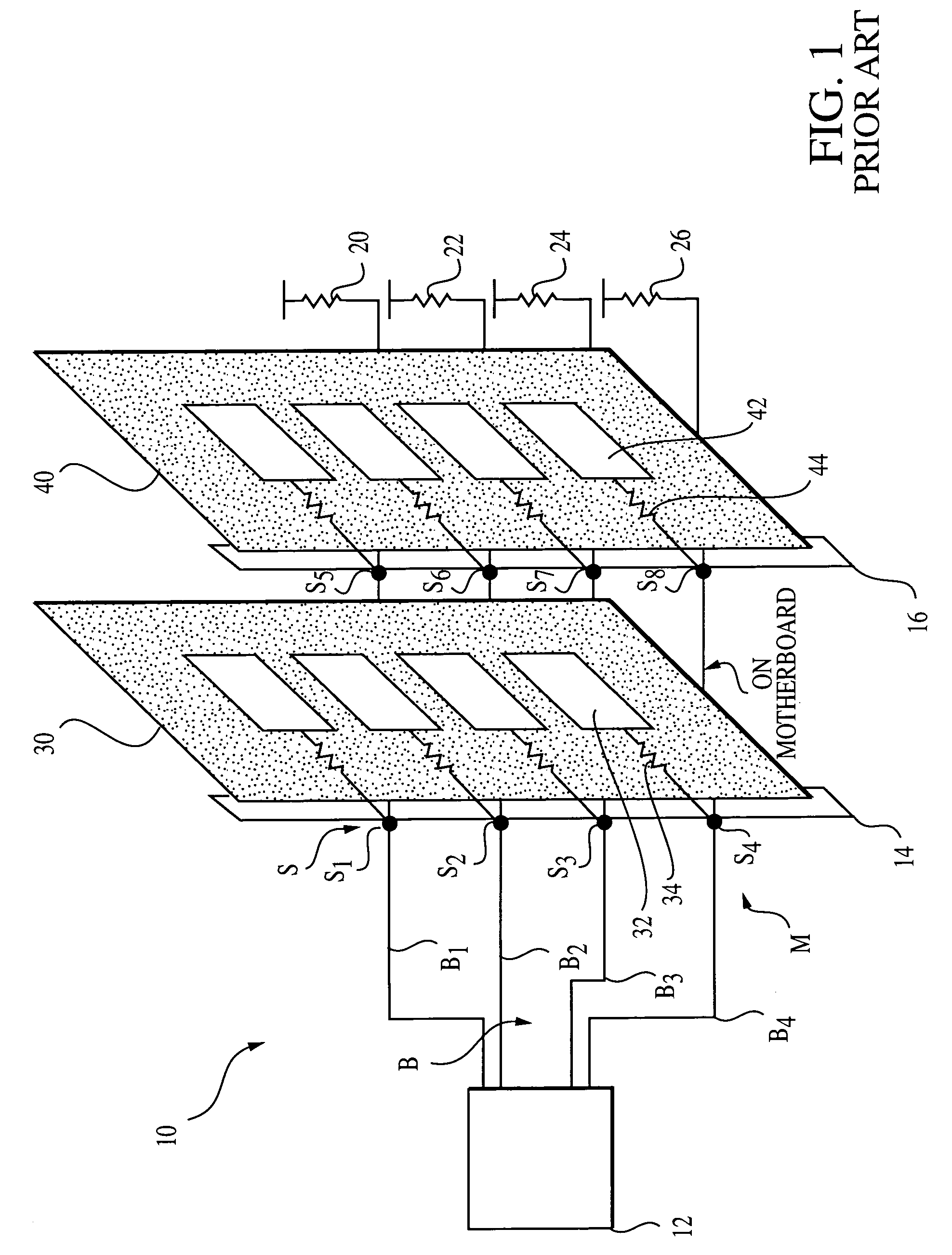High speed bus topology for expandable systems
a computer system and bus topology technology, applied in the field of computer systems, can solve the problems of increasing system cost and module layout complexity, reducing bus length, and reducing bus length, so as to maintain a uniform transmission line impedance, reduce bus length, and increase the operating bandwidth of short-loop buses
- Summary
- Abstract
- Description
- Claims
- Application Information
AI Technical Summary
Benefits of technology
Problems solved by technology
Method used
Image
Examples
Embodiment Construction
[0037]The present invention will be described as set forth in the preferred embodiments illustrated in FIGS. 3–11. Other embodiments may be utilized and structural or logical changes may be made without departing from the spirit or scope of the present invention. Like items are referred to by like reference numerals.
[0038]Referring to FIG. 3, a short-loop bus system 100 constructed in accordance with the present invention is illustrated. In keeping with the example used to described the prior art systems 10, 50 (FIGS. 1 and 2, respectively), the system 100 will be described as a computer main memory subsystem. It should be noted that this is just an example and that the same system 100 is appropriate for any high-speed bus having removable circuit cards.
[0039]The system 100 includes two circuit cards 120, 130 that are attached to bus lines B1, B2 through connectors 104, 106, respectively. Similar to the loop-through bus system 50 (FIG. 2), there are no stub connection points in the ...
PUM
 Login to View More
Login to View More Abstract
Description
Claims
Application Information
 Login to View More
Login to View More - R&D
- Intellectual Property
- Life Sciences
- Materials
- Tech Scout
- Unparalleled Data Quality
- Higher Quality Content
- 60% Fewer Hallucinations
Browse by: Latest US Patents, China's latest patents, Technical Efficacy Thesaurus, Application Domain, Technology Topic, Popular Technical Reports.
© 2025 PatSnap. All rights reserved.Legal|Privacy policy|Modern Slavery Act Transparency Statement|Sitemap|About US| Contact US: help@patsnap.com



